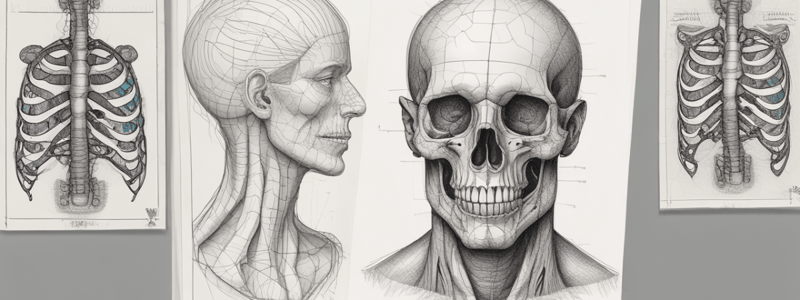Podcast
Questions and Answers
Where is the heart snugly enclosed?
Where is the heart snugly enclosed?
- In the superior mediastinum
- In the posterior mediastinum
- In the middle mediastinum (correct)
- In the anterior mediastinum
Which of the following is NOT included in the ready-to-study notes about the cardiovascular system?
Which of the following is NOT included in the ready-to-study notes about the cardiovascular system?
- Physiology of Myocardial Ischaemia
- Physiology of Hypertension
- Anatomy & Physiology of Blood Vessels
- Pathology of Hypertension (correct)
What does the abbreviation ECG stand for in the notes?
What does the abbreviation ECG stand for in the notes?
- Electrocephaologram
- Electrocardiogram (correct)
- Electrochromatogram
- Electrocarcinogram
Which of the following is NOT a part of the ready-to-study notes about the cardiovascular system?
Which of the following is NOT a part of the ready-to-study notes about the cardiovascular system?
What do the notes mention about the location of the heart?
What do the notes mention about the location of the heart?
Which of the following is NOT a topic covered in the pathology notes of the cardiovascular system?
Which of the following is NOT a topic covered in the pathology notes of the cardiovascular system?
Where is the Middle Mediastinum located?
Where is the Middle Mediastinum located?
What is the function of the Fibrous Pericardium?
What is the function of the Fibrous Pericardium?
Which layer of the Heart Wall prevents clotting of blood within the heart?
Which layer of the Heart Wall prevents clotting of blood within the heart?
What structures anchor the heart and prevent overfilling?
What structures anchor the heart and prevent overfilling?
Which layer of the Pericardium lines the external surface of the heart?
Which layer of the Pericardium lines the external surface of the heart?
The Middle Mediastinum rests on which anatomical structure?
The Middle Mediastinum rests on which anatomical structure?
What is the significance of the Posterior Interventricular Sulcus?
What is the significance of the Posterior Interventricular Sulcus?
Which side of the heart pumps blood through the pulmonary circuit?
Which side of the heart pumps blood through the pulmonary circuit?
What is unique about the coronary circulation in terms of blood supply?
What is unique about the coronary circulation in terms of blood supply?
Which artery encircles the heart in the coronary sulcus?
Which artery encircles the heart in the coronary sulcus?
What happens to blood flowing through the pulmonary circuit?
What happens to blood flowing through the pulmonary circuit?
Where do arteries supplying blood to the myocardium lie?
Where do arteries supplying blood to the myocardium lie?
What is the average delay provided by the Bundle Branches for the impulse from the SinoAtrial Node?
What is the average delay provided by the Bundle Branches for the impulse from the SinoAtrial Node?
What is the average heart rate range of the Bundle Branches (Bundles of His)?
What is the average heart rate range of the Bundle Branches (Bundles of His)?
Where do the Purkinje Fibres begin their impulse transmission?
Where do the Purkinje Fibres begin their impulse transmission?
Which portion of the myocardium do the Bundle Branches serve?
Which portion of the myocardium do the Bundle Branches serve?
What is the primary role of the Bundle Branches in the conduction network?
What is the primary role of the Bundle Branches in the conduction network?
Where are the Purkinje Fibres located within the heart?
Where are the Purkinje Fibres located within the heart?
What is responsible for sustaining the Plateau phase in cardiac muscle cells?
What is responsible for sustaining the Plateau phase in cardiac muscle cells?
During repolarization, what happens to the Ca+ channels and the K+ channels?
During repolarization, what happens to the Ca+ channels and the K+ channels?
What role does the Na/K-ATPase play in relation to excess ions in cardiac muscle cells?
What role does the Na/K-ATPase play in relation to excess ions in cardiac muscle cells?
What characterizes the Absolute Refractory Period in cardiac muscle?
What characterizes the Absolute Refractory Period in cardiac muscle?
What is a key characteristic of the Relative Refractory Period in cardiac muscle cells?
What is a key characteristic of the Relative Refractory Period in cardiac muscle cells?
Why is it critical that the Absolute Refractory Period lasts until muscle relaxation in cardiac muscle?
Why is it critical that the Absolute Refractory Period lasts until muscle relaxation in cardiac muscle?
Flashcards are hidden until you start studying


